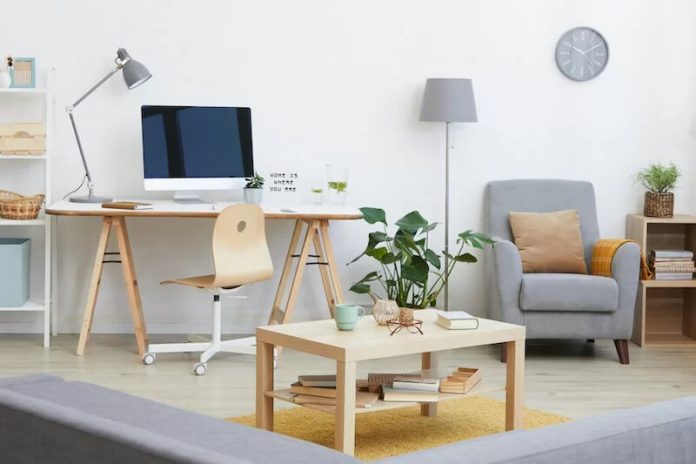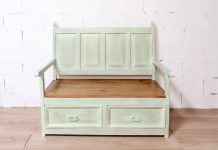
The year 2020 is highlighting the virtues of being able to breathe clean air and make it pleasant. Many scientific studies have shown that the coronavirus spreads to a greater extent in closed spaces, poorly ventilated and where the air is more charged. For this reason, in this guide you will find practical advice on how to improve indoor air quality.
We have been listening to the recommendation of occupy open spaces in catering establishments Y spend time on the street. Always bearing in mind that the rest of the sanitary measures must be respected, such as safety distancethe correct hand hygiene and the accumulations of social groups.
This recommendation is based on the indoor air has pollution levels between 2 and 5 times higher than outdoor airsince the ventilation and purification of this atmosphere is not so good.
These spaces give rise to what is known as indoor air, which are covered non-industrial spaces such as our homes and offices. exist regulations governing indoor air qualityas well as a series of tips to avoid the negative consequences of poor environmental quality.

Ventilate interior spaces every day
The first advice to be able to breathe healthy air in interior spaces is to ventilate them every day. Open the windows for a controlled period of time and let the environment renew itself. In this way, we reduce the concentration of humidity, the smoke is evacuated and air with a higher concentration of oxygen penetrates inside.
However, we must bear in mind that this practice does not prevent the entry of pollen and small particles. Microparticles can be very harmful to people with allergies at certain times of the year. Therefore, although it is considered a necessary action, is not sufficient.

Air renewal through controlled systems
This process goes one step beyond simple ventilation. Consists in controlled mechanical ventilation systems that expel less clean air and introduce higher quality air, but with fewer allergens such as pollen.
In the market we can find ventilation apparatus with heat exchangers that make the air-conditioned air of sufficient quality so as not to suffer from respiratory problems. On the other hand, air conditioning and air conditioning devices must have quality filters and they must always be cleanto also avoid the concentration of particles and that the interior air is recharged.
Air purifiers, humidifiers and dehumidifiers
Beyond ventilation -which, as we have said, is a necessary but not sufficient practice to achieve better quality indoor air-, air purifiers, humidifiers and dehumidifiers They are very useful, especially in spaces where people with respiratory problems live or where there is a lot of traffic.
The main function of purifiers is to filter the air and thus reduce germs, allergens and particles that float in the environment and that can be constantly breathed. Air purifiers, like the ones we can see in this linknot only do they achieve this goal, but many of them also help to absorb odors and generate a more pleasant aroma in the room.
The use of air purifiers is becoming more widespread for reasons such as those indicated in this study, where it is shown that installing them in closed spaces helps improve the health status of asthmatic children. In addition, the Ministry of Health has recommended these systems to prevent the spread of Covid-19.
The humidifiers and dehumidifiers They help control the degree of relative humidity in the environment, since both excess and lack of humidity are harmful to health.

Avoid bad habits
The main counterproductive habit to breathe clean air in indoor environments is smoking. Tobacco smoke is very harmful for active smokers but also for passive smokers. In addition, this ends up impregnating furniture and textiles. The decision to smoke or not in private spaces is up to each family, but if there has been a law for years that prohibits it in commercial spaces, why are we going to do it inside homes or offices?
However, tobacco is not the only element that can generate bad odors and concentration of particles in the home. The kitchen, for example, or the bathroom, if not well ventilated, are also harmful areas.. The proliferation of bacteria, microparticles and fungi is dangerous for environmental health in the home and for respiratory health.
Be careful with cleaning products
We end this review with the advice to improve the quality of indoor air by recommending the use of cleaning products that are aseptic. The toxicity of many cleaning products, such as ammonia, can be harmful.
It is not that its use per se is harmful, but that its ability to disinfect surfaces, floors and walls is closely linked to good ventilation. If this fact does not occur, what we will do is have very clean surfaces, but in exchange for breathing harmful air. In this sense, when cleaning the house it is preferable to opt for hypoallergenic products, natural disinfectants like apple cider vinegar and baking soda and combine cleaning with sufficient ventilation.

Ultimately, the quality of indoor air will depend on everyone who inhabits or occupies that indoor space. Good habits, regular ventilation and the use of air purifiers They will help reduce air pollution levels and improve air quality.
You will find much more guides for home maintenance, DIY and decoration at



